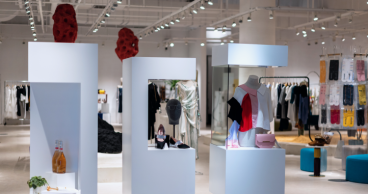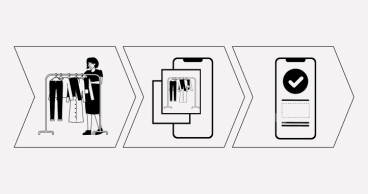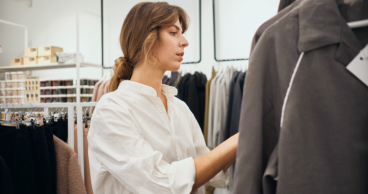Qvalon Blog article content
By: Jul Domingo
You’re strolling down the street with dozens of shops vying for your attention.
After checking out a few of them, you realize these shops fall into three categories:
- Shops with eye-catching displays and a well-organized layout
- Shops with impressive displays or a neat layout–but not both
- Shops with poor window displays and cluttered interiors and narrow aisles
Now, the question is: Which one are you more likely to visit again?
If you went with the first option, you’re not alone. Visual merchandising draws customers in and creates an exciting in-store experience so that they come back often.
Discover the basics of visual merchandising and find out how you can implement and maintain your own strategy–with our help.
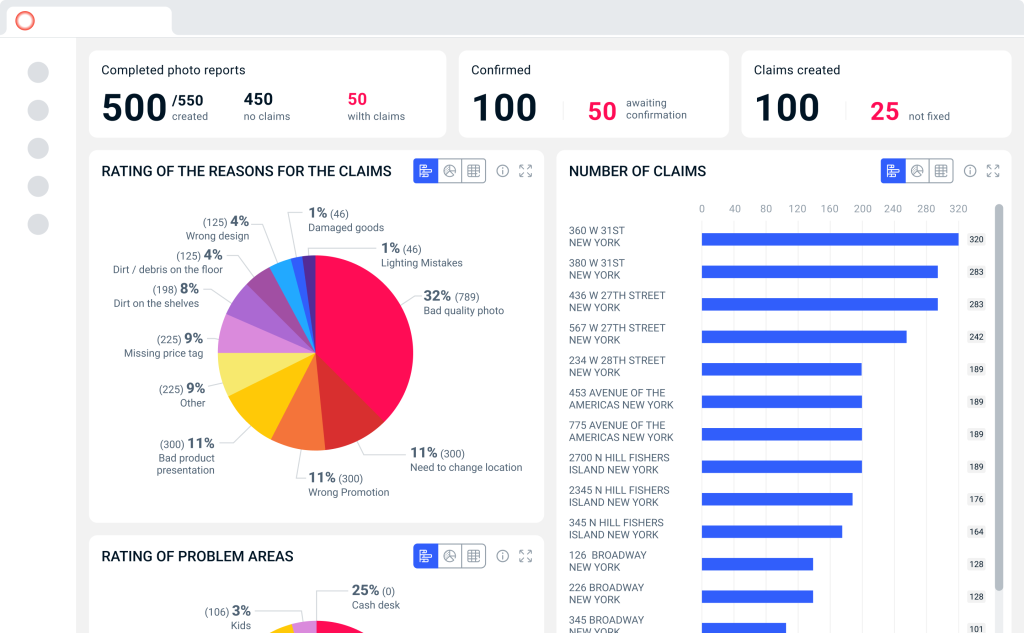
Pic. QVALON Photo Reports Analytics
What is visual merchandising?
Visual merchandising is a marketing approach that focuses on enhancing the retail space to attract customers and make their shopping experience memorable.
It also fosters a positive brand image and styles your products in a desirable way. Besides becoming a top-of-mind item for your customers, you also make it hard for them to walk out of the door after setting foot in your store.
It’s important to recognize that virtual merchandising for brick-and-mortar shops differs from an online store.
Offline retail visual merchandising focuses on the physical retail space to boost sales. The interior and product displays, floor plans, color, lighting, and landscaping must work together to attract customer attention.
Online visual merchandising techniques optimize visual engagement to lower the bounce rate and improve conversions.
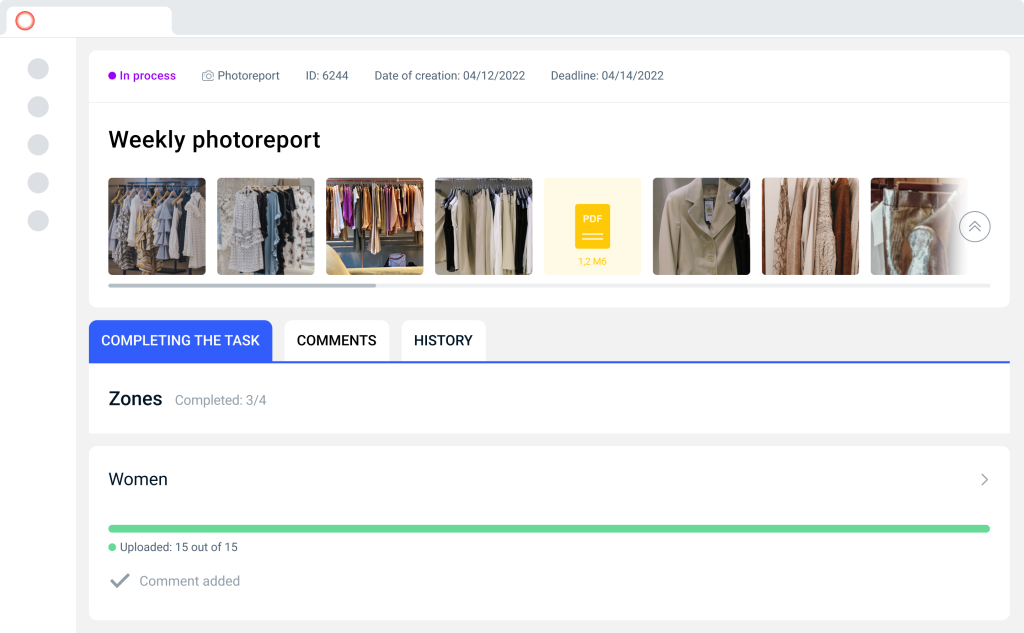
Pic. QVALON Photo Reports Interface
In this piece, we'll focus solely on retail visual merchandising that creates an enjoyable shopping experience in stores.
What are the main goals of visual merchandising
Visual merchandising for retail outlets has one goal: to attract customers and boost sales.
Enhancing your customer’s experience is the key to this.
Consider Apple, which boasts a sleek interior design that complements its interactive product displays. It’s the hallmark of every Apple store.
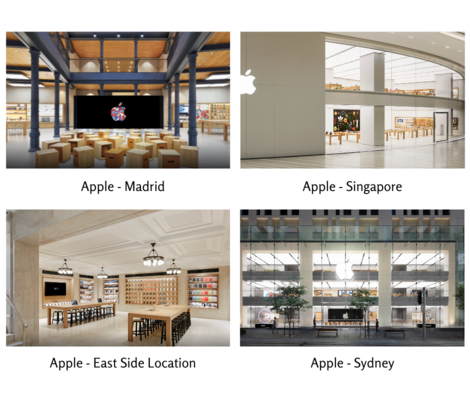
Source: Apple Retail
Evidently, Apple has a strong visual merchandise strategy that makes them easy to recognize (even from a mile away)–and it translates to all their locations, regardless of the continent. This strong visual merchandising strategy also comes with many perks.
Pros of visual merchandising
Storytelling as a brand strategy. Your retail space is where your brand gets to send its message, values, and identity with great conviction.
Long-term customer relationships. Visual merchandising isn’t a onetime endeavor to catch people's attention. Research shows it also strengthens your connection with them over time.
Increased uniqueness and business value. The brand message you send to the world and the customer relationships you make are what make you stand out from competitors.
Retail space optimization. Doing so also ensures optimized inventory levels and uncluttered displays.
Effective store layout, traffic flow, and shelf segments. With proper product allocation to shelves and the actual shelf layout, you can increase profit by up to 7%.
Of course, revamping your visual merchandising displays isn't all about the benefits. You need to put in some work, time, and money before you can reap the advantages–and these initiatives have their own set of drawbacks.
Cons of visual merchandising
Expensive implementation and maintenance. In addition to the costs associated with redesigning the store and purchasing furniture and fixtures, you also need to hire a Visual Merchandiser to help with visual strategy management. The average annual salary for this role is $38,667 in the US.
Time-consuming. According to Dan Phillips of Food Market Designs, a full store remodel takes about six months or more.
Continuous efforts to sustain positive results. Just like any marketing practice, visual merchandising isn’t a one-off process. You need to switch it up often based on the season and trends.
Costly training and research to keep up with the latest commercial trends. Trends come and go. To stay relevant, your brand should participate. Some 46.4% of companies reported growth by conducting more research on their target customers–which, of course, requires financial investment.
Extra tasks for retail employees to meet the increased demand. With great success comes great responsibilities. You may have to deal with more customers, sales, and deliveries. Proper task management is key here.
Refer to these pros and cons to decide whether investing in visual merchandising makes sense for your business. But for the record: when done right, visual merchandising can drive your revenue and brand awareness.
5 Major key elements of visual merchandising
Learning these key visual merchandising elements can help you create a visual balance in your stores. In fact, the best visual merchandising displays combine these five factors:
1. Color and texture
Visual merchandising on color and texture defines the store's appealing atmosphere. Select the color palette that speaks for your brand message and matches your interior and exterior visual merchandising displays.
In terms of texture (physical or illusory), choose something that amplifies the mood of your brand colors.
For instance, Burger King and McDonald's pull this off by using high gloss furniture coated in warm colors. Colors such as red, orange, and yellow are often associated with food–making them great colors for stimulating appetite.
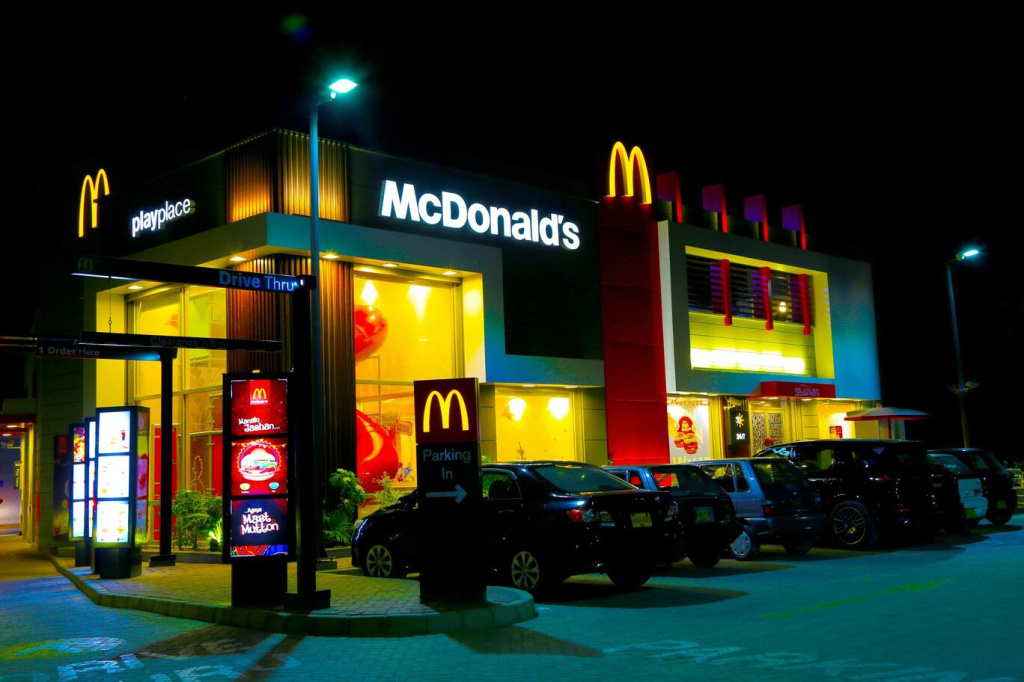 Mcdonald’s outlet (Source: Shahbaz Ali)
Mcdonald’s outlet (Source: Shahbaz Ali)
While most luxury brands like Chanel, Prada, and Sephora use shades of black and combine them with smooth, reflective surfaces to indicate elegance.
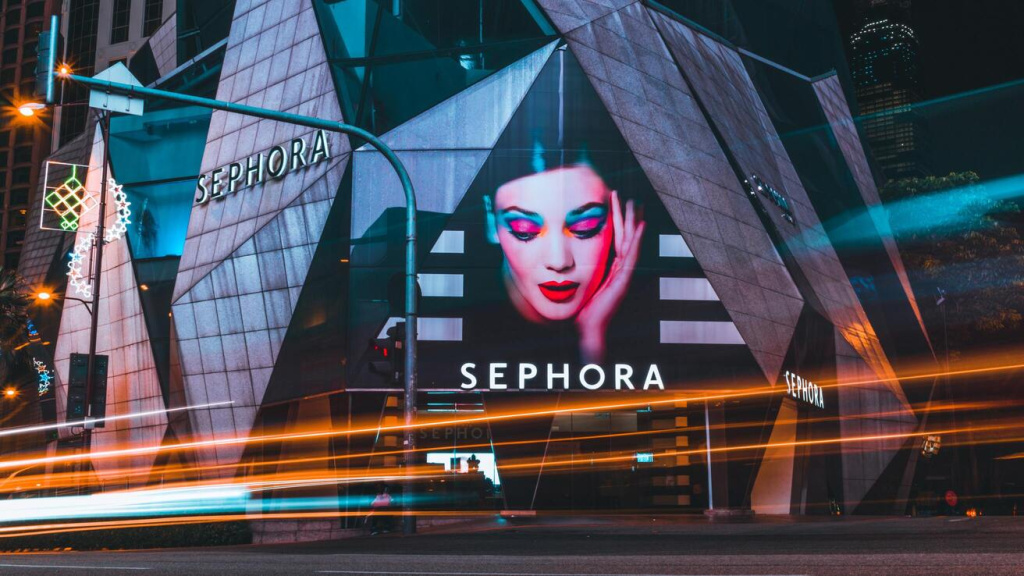 Sephora Store (Source: Photo by Deva Darshan)
Sephora Store (Source: Photo by Deva Darshan)
2. Lighting
In visual merchandising, the store lighting sets the mood for your retail space. So they must match the type of your business.
The lighting scheme includes general lights–such as track lights, ceiling lamps, chandeliers–and accent lights (i.e. spotlights). Mix and match these light fixtures in different spots of your store, illuminating every corner.
Here’s a valuable tip when choosing lights: Make sure they are appropriate for your business.
Ambient and mellow lights are best for establishments that need to create a relaxing atmosphere, such as spa boutiques and fine dining restaurants.
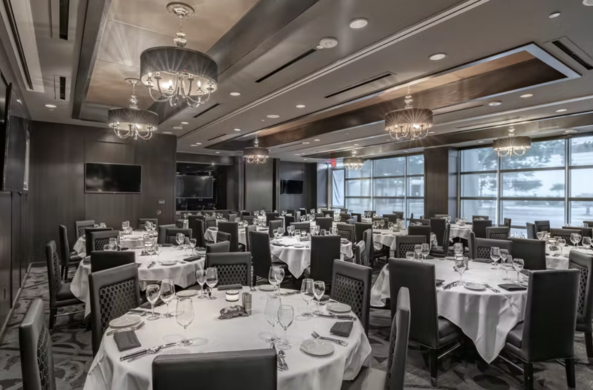
Luxurious lighting elevates the dining experience (Source: Morton’s Steak House Sacramento Branch)
Imagine using dim lights in a convenience store, like 7-Eleven. It would be impractical for you and your customers. Despite the high price tag, they leave your customers stumbling around in the dark looking for a Snickers bar. Energy-saving bright lights make the most sense for this type of establishment.
Once these lights are set up, conduct periodic checks to ensure their functionality. QVALON’s task management tool is perfect for this. Set tasks for daily monitoring of various visual merchandise displays–not just light fixture maintenance.
Make visual merchandising elements simpler to implement and maintain.
3. Empty space
An empty space or white space lets your customers take a break from visual merchandising displays. It's literally an empty space with no furniture, no fixture, nothing.
White spaces prevent the impression of a ruffled place, comforting the eyes of your customers.
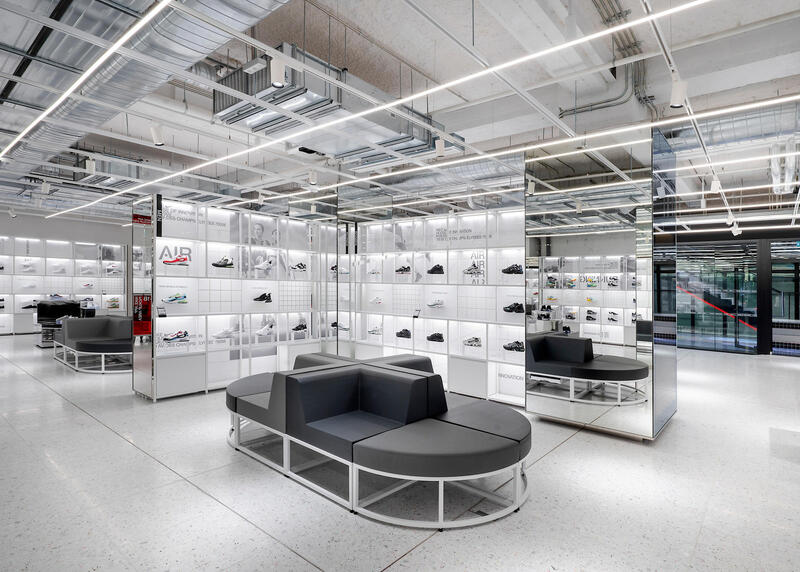
Plenty of white space in this Nike Store (Source: Nike)
Nike used the white space in the room to make the entire room more pleasant and spacious.
This technique also makes the shoe racks stand out, drawing customers in. That’s because white spaces work closely with our next retail visual merchandising element: the focal point.
4. Focal point
The focal point, otherwise known as the point of purchase displays, is the hearth of visual merchandising.
Depending on your industry, you can create it by using a set of dressed mannequins, unique product arrangements, or themed store props.
Its key concept is to guide customers to a specific area of the store.
Stores display them along their entrances and in their windows. But some retailers also place them in the main aisle of the store or next to the counter.
If you’re wondering which products to highlight when designing your visual merchandising displays, these tend to be the most popular options:
- Best-selling products
- Seasonal products
- Limited items on sale
- Latest product releases
5. Landscaping
Landscaping is the last element of visual merchandising.
It's the art of juxtaposing the first four elements to achieve a harmonious store design. It comes in various forms based on how you want to make your products more visible and captivating.
Some designs stand out by balancing the placement of elements left and right or up and down (symmetrical). Others combine different shapes and sizes (asymmetrical) for a more striking effect.
Either way, you can drive social clout in your brand by adding the right enhancements that are perfect for photo-ops for your customers. For instance, benches, murals, and mirrors create low-key emotive designs.
These elements cover the overarching concepts of visual merchandising. If you want to get granular, let’s shift to a more tangible topic: types of merchandising displays.
5 Types of visual merchandising displays
Your visual merchandising displays are silent salesmen. They take up most of your store's space to help you sell. The following types of visual merchandising displays are worth considering–but it’s still up to you to decide which options match your brand.
1. Interactive displays
When you go to an Apple store, do you test out the iPhones and Macbooks on display?
That's interactive visual marketing at work. It's a great trick to entertain customers while educating them about the products–which is an awesome way to convert customers without being pushy.
You let your shoppers try your products and compare their choices before buying them. If you have quality products, they will sell themselves. At the same time, you create a memorable experience that can bolster customer satisfaction.
Interactive displays aren’t limited to technology-based products. Any establishment that wants to convince their shop visitors to experience their products before a purchase can throw their hat in the ring.
Aside from trying out products, options for this visual merchandise display extend to:
- In-store digital devices, such as interactive displays and TV-connected cameras.
- Immersive experiences–ranging from virtual reality (very important now that Meta is on the rise), gamified engagements, and smart robots.
- Display–think an Instagram wall in a coffee shop.
2. Window displays
Window displays are the front line of your visual merchandising efforts. That's because they act as your hook to attract customers, even those unfamiliar with your brand.
This study shows that window displays contribute to traffic, with 80% of shoppers expressing fondness for theme-based displays.
This type of visual merchandising display is a great way to showcase your brand image and connect to your audience. Let your designs reflect the idea behind your business. See how Ralph Lauren always don their vintage pieces to show that their style can stand the test of time:
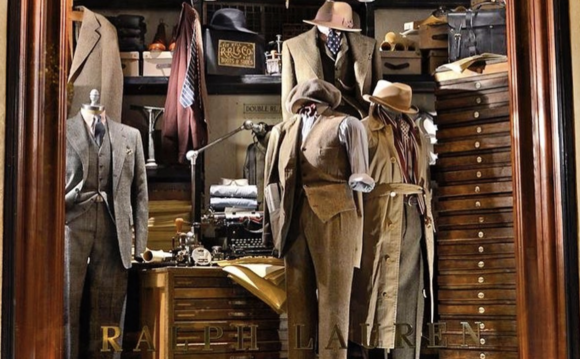
Ralph Lauren Window Display (Source: IG: @vintagelovertr)
Last but not least, use it as an opportunity to promote sales, special offers, and participate in seasonal events. Here’s how Ralph Lauren jazzes up their window display for Christmas:
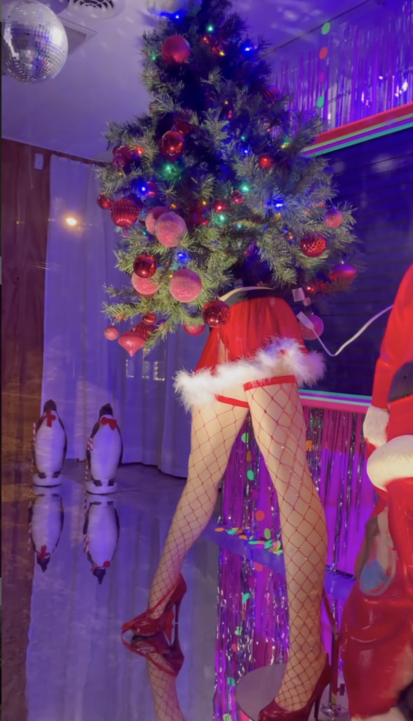
Ralph Lauren Window Display Christmas (Source: IG: @humphreyindustries)
Pro Tip: Avoid clutter and keep your store windows clean.
3. Mannequins
Mannequins are visual merchandising tools most commonly used by fashion retail stores–and they are proven to have a direct impact on the purchasing choice of consumers.
So if you have a strategy for dressing and arranging your mannequins, there's a likelihood of positive customer response—thus, increasing sales.
Note that mannequins aren't limited to clothing displays. You can also use them to highlight scarves, jewelry, and accessories. Even better, why not style all of them together?
This strategy works well for fashion brands, like H&M.
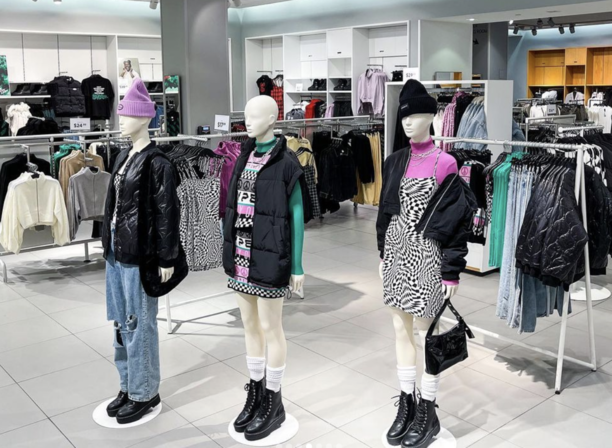
H&M’s Stylish Mannequins (Source: IG: @justinharranchar)
4. Checkout displays
Imagine waiting in a queue to pay for a bottle of water when your eyes catch sight of stacks of mint-flavored gum. Despite not intending to buy one, you do so.
This is where having checkout displays, well, checks out.
Like other upselling visual merchandising techniques, checkout displays aim to provoke impulse purchases. We often see them in grocery stores. You know, where that one Twix bar calls out to you when you’re handing your card to the cashier.
Others retail establishments have also gotten in on the action. Fashion brands display socks, necklaces, and other nifty items. Coffee shops with chocolate bars, tea, and bottled water.
The trick is to making this type of visual merchandising display work is to choose small, low-ticket items. The goal here is to prevent customers from overthinking their purchases.
Not sure what to display at your checkout counter? Try gift cards, add-ons, and pocket-sized products.
5. Signages
A shop's sign plays an important role in conveying messages inside and outside the shop.
Visual merchandising's goal is not just about blowing your customers' minds with your store aesthetics.
Signages can display product information to display transparency and satisfy customers’ curiosity. Here’s an example of a grocery store with clear and accurate product labeling
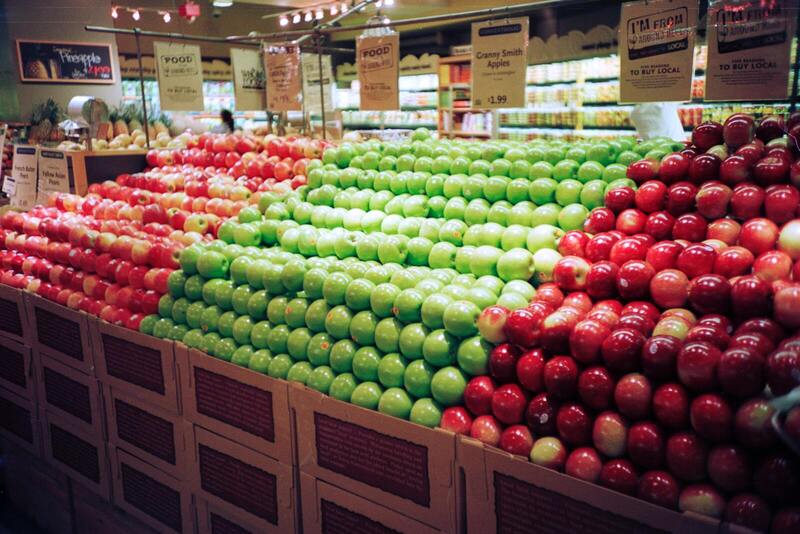 A grocery store with proper product labeling (Source: Scott Evans)
A grocery store with proper product labeling (Source: Scott Evans)
They also cover your outdoor business signboards, window signs, aisle directions, product guides, and safety signs.
Signages must be clear, readable, and concise. If possible, use dark text against a light background that still fits your store designs.
Tying your goals with the most effective visual merchandising elements and displays is just the start. Implementing and maintaining your visual merchandise strategy involve the use of a retail management solution.
How QVALON strengthens your visual merchandising strategies
Visual merchandising’s conformity across multiple outlets can be challenging with manual methods alone.
A physical inspection could help, but it’s not always efficient and can be expensive. Think of the travel expenses your inspector incurs from outlet to outlet.
Fortunately, the rise of technology revolutionized the game of visual merchandising. With QVALON, the stress, expenses, and inconsistencies from disparate visual merchandising practices are conquerable. Here's how our photo reports feature solves those inefficiencies.
Timely display photo reports for each task
Retail staff can send real-time store display photos anytime you or your auditor assign them a task. To verify task completion, your employees only have to attach photos using their smartphones. They can also upload them to a network drive, cloud storage, or even send them via messenger.
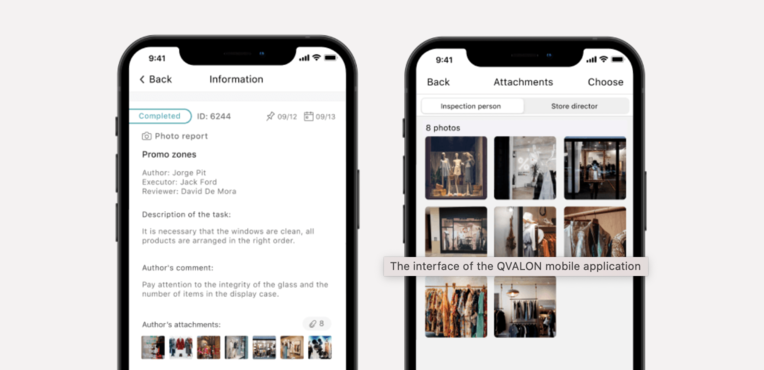
The interface of QVALON mobile app
Centralized photo database for task monitoring
All photo reports are accessible to the person auditing the displays. This database has a filtering system to narrow down the search for a particular store. You can also sift through the tasks with ease. Some of the criteria are deadline, status, type, executor, and author.
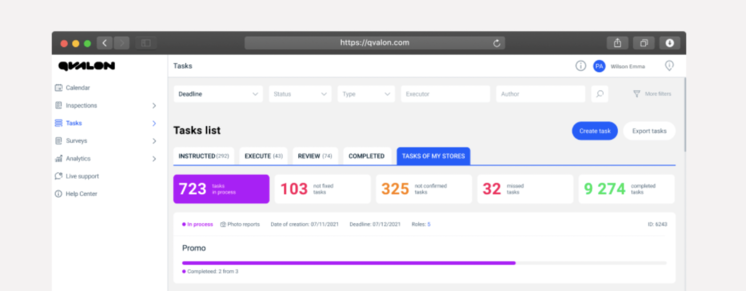
Violation notifications and quick feedback
Let’s say you see an error in the report. You can write comments and highlight mistakes and violations through the external photo editor app.
Reverting back to the shop assistants is easy. It can be done via email, Messenger, or SMS. And if that’s not enough, QVALON's built-in video link can help upper management provide actionable feedback. After that, simply assign new tasks to correct the violations on our platform.
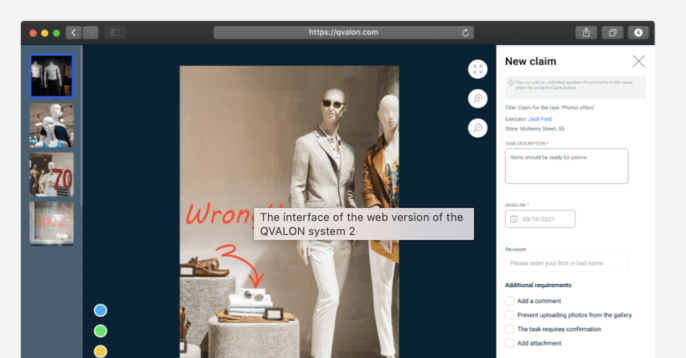
Internal photo editor
Streamline your visual merchandising with QVALON
Having a solid understanding of the key components of retail visual merchandising is a good first step. But executing them is a different story. Using a tool like QVALON makes the deed a lot easier, so you won't lose out on the benefits of visual merchandising.
Schedule your free demo with us.

